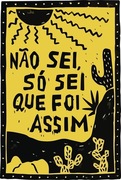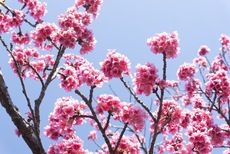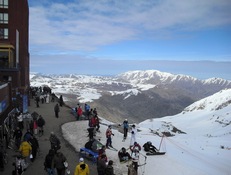Customers have never had as much power in the palm as they have now (literally) and this is driving rapid change in every segment. It is no different in the Hospitality industry, which despite being a traditional segment, has been adapting to this new reality.
Today it is rare for a guest to make hotel reservations over the phone or even through the hotel website. Most consult directly with online travel agencies (OTAs), which quickly provide a variety of hosting options with photos, user ratings, facilities and location details, and price comparisons. All in one place.
We already know that 60% of customers' buying decision comes from the photos presented, so they should be a priority for managers, ensuring a strong presence in online tools. We also know that there is a strong tendency for “Experience Tourism” and the challenge for administrators and photographers must be to convey a valuable experience through their images.
A good strategy for getting a photo portfolio that will bring results is to think from a customer perspective. What are they looking for? What do they have fun with? What do they recognize as value? What are your needs and desires? With this clearly understood, publish those images that best express these moments, expectations and feelings. It is also interesting to keep in mind that people enjoy having fun online with third party experiences (which is why so successful social networks are).
Having a portfolio of creative and professional photographs is more valuable than any other marketing strategy the hotel can adopt, as well as it is someone's first contact with the establishment, they are universally understood. Enjoy, don't be afraid to expose yourself, a good photographic project really makes a difference. Remember that good photos highlight the best of the Hotel.
How to hire a photographer for Hospitality?
The type of photographer you need will vary depending on the brand positioning of your hotel. In most cases, it is not recommended to hire a “lifestyle” photographer, as the use of gorgeous models, makeup artists and stylists can backfire for a variety of reasons. First, the photos may look "too good" and will create very high expectations for guests; Another aspect would be the lack of identification of potential guests with the people photographed, as most people do not fit the standards of beauty presented by the media. It is always good to remember that tourism and fashion are different markets.
Instead, it is recommended to hire a photographer specialized in architecture and interior design, as they are generally more skilled and experienced in getting good results from natural light for environments and extracting the best atmosphere possible from each space. The equipment used is also more appropriate as they use lenses and techniques best suited for this type of photography, ensuring better exposure and levelling the environment.
Avoid photographers specializing in wedding photos or portraits. They are usually able to make good photos, but they often lack the equipment, experience, and passion to portray architectural spaces and gastronomy (another important item in hospitality photography).
Another important point: years ago, HDR photography became very popular in hospitality, following a style of image that first emerged and became popular in real estate, which required more vibrant and compelling photos in its catalogues to draw public attention to the properties for sale.
However, with hotel photography, some caution is required when using post-production processes, as a very extreme result is not recommended. Using too saturated colours, for example (particularly in the rooms photos), can produce an unrealistic image which may disappoint guests or detract from the image of lightness, relaxation and cleanliness that many guests expect to find in a hotel.
Especially in Europe, many hotel chains have already realized this aspect of photographic material production and the language is much more in tune with the 21st century traveller.
However, HDR photography is still very useful if done carefully and without saturation, once the technique allows you to combine photos with the correct exposure of light both indoors and outdoors.
Hero Photo or “The Photo”.
The suggestion of not to overdo the picture of the rooms and facilities generally has one exception. Take a photo that we will call “The Photo” (which is also known as Hero Photo), i.e. the one that will be shown as cover in the online tools. It is usually about the exterior of the hotel (if the property doesn't have a noteworthy exterior, it might be from the lobby or even the interior of the best room) and should be taken at sunrise or sunset (the so-called golden hour) and we should use all the possible tricks (HDR, external lights, Photoshop, etc.).
This type of photo is prevalent in the architecture industry but works great for hotels too. The result is not just a welcoming photo that says, “come and stay here tonight”, but longer exposures in dusk photography tend to highlight the best spots and take advantage of the fantastic natural daylight to enhance the architecture of the place.
Remember, in an ocean of competitors, it's really necessary to have “The Photo” to get people's attention.

O QUE É HERO PHOTO?
Os clientes nunca tiveram tanto poder na palma da mão como agora (literalmente) e isso está impulsionando mudanças rápidas em todos os segmentos. Não é diferente na indústria de Hospitality, que apesar de ser um segmento tradicional, vem se adaptando a essa nova realidade.
Hoje é raro um hóspede fazer reservas de hotel por telefone ou mesmo pelo site do hotel. A maioria consulta diretamente as OTAs (online travel agencies) que apresentam, de modo rápido, várias opções de hospedagem com fotos, avaliações de usuários, detalhamentos das instalações e localização, além de comparativo de preços. Tudo no mesmo lugar.
Já sabemos que 60% da decisão de compra dos clientes vem das fotografias dos produtos que são apresentadas, por isso elas devem ser prioridade para os gestores, garantindo uma presença marcante nas ferramentas online. Sabemos também que existe uma tendência forte para o “Turismo de Experiência” e o desafio de gestores e fotógrafos deve ser justamente transmitir uma experiência de valor através de suas imagens.
Uma boa estratégia para conseguir um portfólio de fotografias que trará resultados é pensar pela perspectiva dos clientes. O que eles procuram? Com o que eles se divertem? O que eles reconhecem como valor? Quais suas necessidades e vontades? Com isso compreendido de forma clara, publique aquelas imagens que melhor expressam esses momentos, expectativas e sentimentos. É interessante também ter em mente que as pessoas gostam de se divertir online com experiências de terceiros (aliás esse é o motivo do tamanho sucesso das redes sociais).
Ter em seu portfólio um conjunto de fotografias criativas e profissionais é mais valioso que qualquer outra estratégia de marketing que o hotel possa adotar, pois, além de ser o primeiro contato de alguém com o estabelecimento, são universalmente compreendidas. Aproveite, não tenha medo de se expor, um bom projeto fotográfico realmente faz a diferença. Lembre-se que boas fotos destacam o que o Hotel tem de melhor.
Como contratar um fotógrafo para Hospitality
O tipo de fotógrafo que você precisa vai variar de acordo com o posicionamento da marca de seu estabelecimento. Na maioria dos casos não é recomendado contratar um fotógrafo especializado em “estilo de vida”, pois o uso de modelos lindíssimos, maquiadores e estilistas pode ser um “tiro pela culatra”, por vários motivos. Em primeiro lugar, as fotos podem parecer "boas demais" e criará expectativas muito altas nos hóspedes; outro aspecto seria a falta de identificação dos potenciais hóspedes com as pessoas fotografadas, já que a maioria das pessoas não se encaixam nos padrões de beleza apresentados pela mídia. É sempre bom lembrar que turismo e moda são mercados diferentes.
Em vez disso, é recomendado contratar um fotógrafo especializado em arquitetura e design de interiores, já que eles geralmente são mais habilidosos e experientes em obter bons resultados da luz natural para ambientes e extrair de cada espaço a melhor atmosfera possível. O equipamento utilizado também é mais apropriado, já que usam lentes e técnicas mais adequadas para esse tipo de fotografia, garantindo melhor exposição e nivelação do ambiente.
Evite fotógrafos especializados em fotos de casamentos ou retratos. Normalmente são capazes de fazer boas fotos, mas não costumam ter o equipamento, a experiência e a paixão necessários para retratar espaços arquitetônicos e gastronomia (outro importante item da fotografia de hospitality).
Outro ponto importante: anos atrás a fotografia HDR tornou-se muito popular na hotelaria, seguindo um estilo de imagem que surgiu e se popularizou primeiro no setor imobiliário, que requeria fotos mais vibrantes e atraentes em seus catálogos, para chamar atenção do público sobre as propriedades para comercialização.
Porém, com fotografia de hotelaria, é necessário tomar um certo cuidado no uso de processos de pós-produção, pois não é recomendável um resultado muito extremo. Utilizar cores muito saturadas, por exemplo (em particular nas fotografias dos quartos), podem produzir uma imagem irreal, que não reflita a realidade, o que pode desapontar os hóspedes ou prejudicar a imagem de leveza, relaxamento e limpeza que muitos hóspedes esperam encontrar em um hotel.
Principalmente na Europa, muitas redes de hotelaria já se deram conta desse aspecto da produção de material fotográfico e a linguagem está muito mais em sintonia com o viajante do século XXI.
No entanto, a fotografia HDR segue muito útil, se for feita com cuidado e sem saturação, pois a técnica permite combinar fotos com a correta exposição de luz tanto nos ambientes externos quanto internos.
Hero Photo ou "A" Foto.
À sugestão de não exagerar na fotografia dos quartos e das instalações em geral tem uma exceção. Fazer uma foto que chamaremos de “A Foto” (que lá fora é conhecida como Hero Photo), ou seja, aquela que será mostrada como capa nas ferramentas online. Ela normalmente tem por tema o exterior do hotel (se o estabelecimento não tiver um exterior digno de nota, pode ser do lobby ou até mesmo o interior do melhor quarto) e deve ser tirada no nascer ou no pôr-do-sol (a chamada golden hour) e nela devemos utilizar todos os truques possíveis (HDR, luzes externas, Photoshop, etc.).
Esse tipo de foto é predominante no setor de arquitetura, mas funciona muito bem também para hotéis. O resultado não é apenas uma foto acolhedora que diz “venha e fique aqui esta noite”, mas as exposições mais longas na fotografia ao entardecer tendem a destacar os melhores pontos e aproveitar a luz natural fantástica do entardecer para valorizar a arquitetura do local.
Lembre-se, em um oceano de concorrentes, é realmente necessário ter “A Foto” para atrair a atenção das pessoas.




